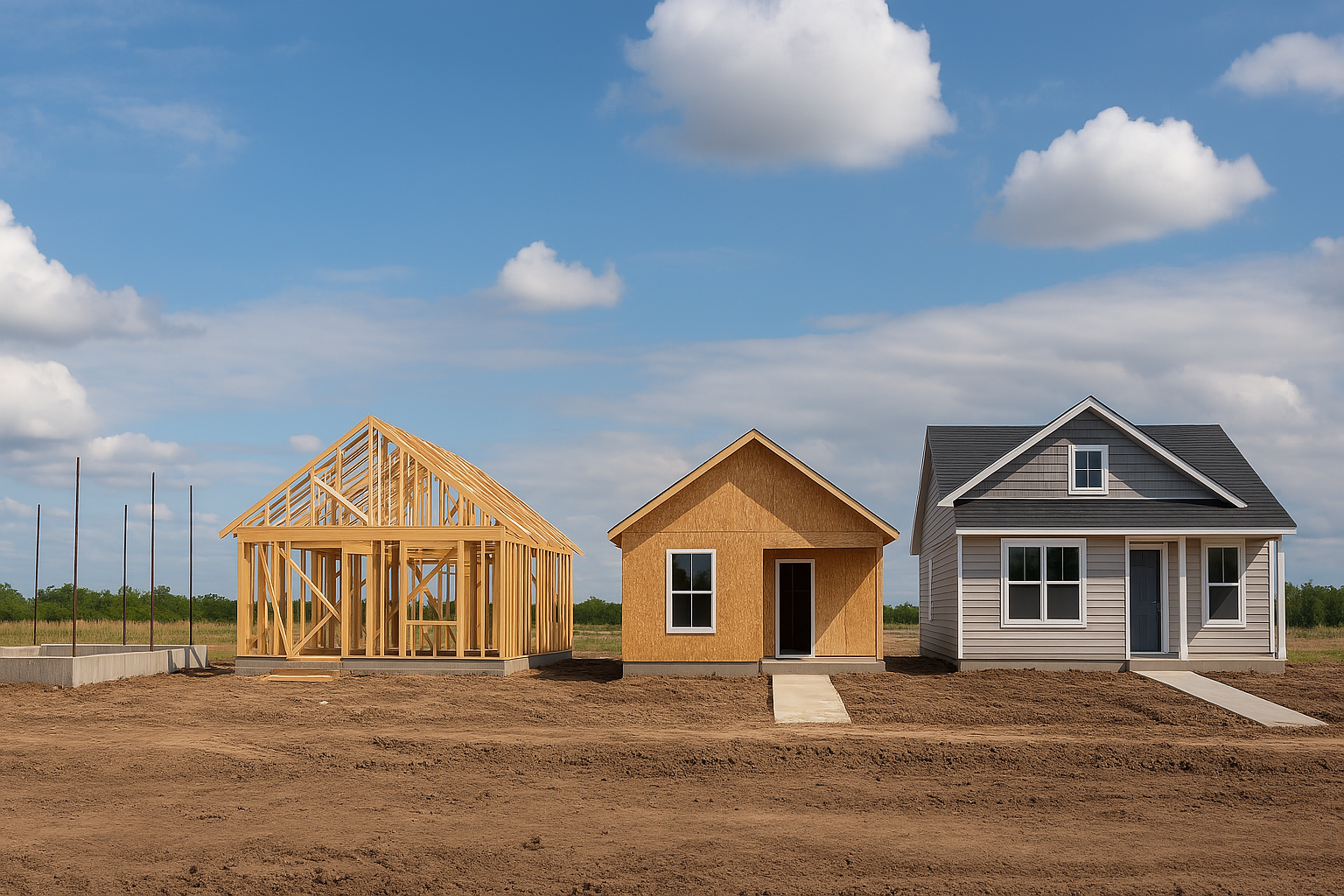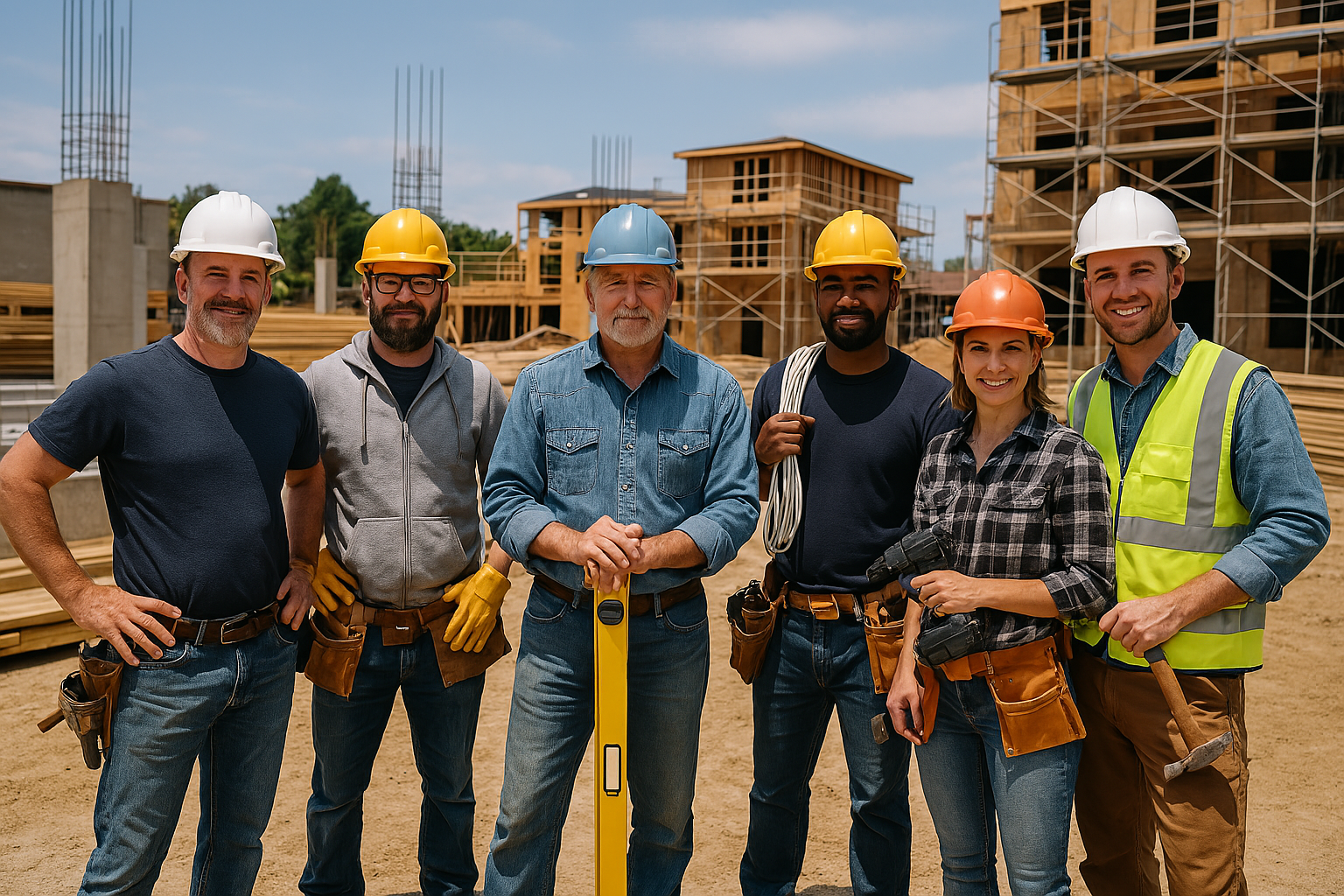
Check out our app!
Explore more features on mobile.
Start Construction: Your Complete 10-Step Guide to Building a House
Building a house is an exciting journey that requires careful planning, coordination, and execution. Whether you’re a first-time builder or an experienced investor, understanding the sequential steps of construction ensures your project stays on track, on budget, and built to last. This comprehensive guide breaks down the entire construction process into 10 essential steps, giving you the knowledge to manage your build with confidence and achieve the results you envision.

[Image: Home Construction Process Overview]
Each construction step builds upon the previous one, creating a systematic approach that professional builders have refined over decades. By following this proven sequence, you’ll avoid costly mistakes and ensure every element of your home is properly installed and inspected before moving forward.
Step 1: Site Preparation
Before any construction begins, your site must be properly prepared to support your new home. This critical first phase involves clearing the land, establishing proper drainage, and creating access for construction equipment.
Key activities during site preparation include:
- Land clearing and removal of vegetation, rocks, and debris
- Soil testing to determine foundation requirements
- Establishing proper elevation and slope for drainage
- Creating access roads for construction equipment
- Setting up temporary utilities for the construction process
Proper site preparation prevents future issues with water damage, foundation settling, and structural integrity. Investing time and resources in this stage saves significant money and headaches later.
Step 2: Foundation Work
Your home’s foundation provides essential structural support and must be designed and constructed with precision. The foundation type—slab, crawlspace, or basement—depends on your soil conditions, climate, budget, and design preferences.
The foundation process typically includes:
- Excavation to the proper depth based on engineering specifications
- Installation of footings to distribute the structural load
- Forming and pouring concrete walls or slabs
- Waterproofing to prevent moisture infiltration
- Installation of drainage systems to direct water away from the foundation
A properly constructed foundation ensures structural stability for decades and prevents expensive issues like cracking, settling, and water damage. Always work with experienced professionals who understand local soil conditions and building codes.
Step 3: Framing
Framing creates the skeleton of your home, establishing room dimensions, wall heights, roof pitches, and the overall structural integrity of the building. This phase transforms your 2D plans into a 3D structure.
The framing process includes:
- Floor system construction with joists and subfloor material
- Wall framing, including load-bearing and non-load-bearing walls
- Roof framing with trusses or rafters
- Installation of exterior sheathing for structural rigidity
- Rough openings for windows, doors, and mechanical systems
Quality framing ensures your home will stand the test of time. Professional framers understand load paths, structural engineering principles, and how to create a solid structure that meets building codes while accommodating future finishing materials.
Step 4: Roofing
Your roof is your home’s first line of defense against the elements. A properly designed and installed roofing system protects the entire structure from water damage while providing insulation and ventilation benefits.
The roofing process includes:
- Installation of roof decking (typically plywood or OSB)
- Application of underlayment and water barriers
- Flashing around roof penetrations and valleys
- Installation of roofing materials (shingles, metal, tile, etc.)
- Proper ventilation systems to prevent moisture buildup
Investing in quality roofing materials and professional installation is crucial for protecting your investment. A well-constructed roof should last 25-50 years depending on materials, saving on costly repairs and potential interior damage from leaks.
Step 5: Plumbing & Electrical
While invisible in the finished home, plumbing and electrical systems are the lifelines that make your home functional, comfortable, and safe. These systems must be meticulously planned and installed before interior walls are closed up.
This phase includes:
- Rough plumbing installation (supply lines, drain lines, vent stacks)
- Rough electrical installation (wiring, outlet boxes, switch boxes)
- Installation of main electrical panel and subpanels
- Gas line installation if applicable
- Rough-in for specialized systems (vacuum, security, audio)
Licensed plumbers and electricians ensure your systems meet building codes and function properly for years to come. Cutting corners in this phase can lead to dangerous conditions, expensive repairs, and difficulty getting final occupancy permits.
Step 6: HVAC
Heating, ventilation, and air conditioning (HVAC) systems control your home’s interior climate and air quality. Proper design and installation ensure comfort, energy efficiency, and healthy air circulation throughout the year.
The HVAC installation process includes:
- Ductwork installation throughout the home
- Placement of indoor air handlers and outdoor condensing units
- Installation of thermostats and control systems
- Ventilation systems for bathrooms, kitchen, and attic
- Testing and balancing the entire system
Properly sized HVAC systems prevent energy waste and ensure consistent comfort. Work with HVAC professionals who perform load calculations specific to your home’s design, orientation, insulation values, and local climate conditions.
Step 7: Insulation & Drywall
Insulation and drywall create the thermal envelope and interior walls of your home. They contribute significantly to energy efficiency, sound control, fire resistance, and the overall comfort of your living spaces.
This phase includes:
- Installation of various insulation types (fiberglass, foam, cellulose)
- Air sealing to prevent energy loss
- Hanging drywall panels on walls and ceilings
- Taping, mudding, and finishing drywall seams
- Texturing surfaces if desired
Quality insulation installation can reduce energy costs by 20-30% while enhancing comfort. Professional drywall finishing creates the smooth surfaces that will serve as the canvas for your interior design and paint colors.
Step 8: Interior Finishes
Interior finishes transform your house into a home, adding personality, functionality, and the aesthetic touches that make spaces uniquely yours. This phase brings your design vision to life through a series of specialized installations.
Interior finishing typically includes:
- Installation of doors, trim, and moldings
- Cabinetry installation in kitchens and bathrooms
- Countertop fabrication and installation
- Flooring installation (hardwood, tile, vinyl, carpet)
- Interior painting and wall treatments
- Fixture installation (lighting, plumbing, hardware)
Quality interior finishes enhance both the value and enjoyment of your home. Work with skilled craftspeople for custom touches that elevate your space and create a cohesive design throughout the home.
Step 9: Exterior Finishes
Exterior finishes create your home’s curb appeal while providing critical protection from the elements. These components must balance aesthetics with durability to ensure long-term performance in your local climate.
Exterior finishing work includes:
- Siding or exterior cladding installation
- Window and exterior door installation
- Exterior trim and fascia
- Gutters and downspouts
- Exterior painting or staining
- Porches, decks, and exterior stairs
Quality exterior materials and proper installation protect your home from moisture, pests, and weather damage. Choose materials appropriate for your climate that offer the right balance of maintenance requirements and longevity.
Step 10: Landscaping
The final step in the construction process, landscaping enhances your property’s beauty while providing practical benefits like erosion control, privacy, and outdoor living spaces. Strategic landscaping complements your home’s architecture and ties the entire property together.
Landscaping typically includes:
- Final grading to ensure proper drainage away from the foundation
- Installation of irrigation systems
- Hardscaping elements (patios, walkways, retaining walls)
- Lawn establishment (sod or seed)
- Planting trees, shrubs, and garden beds
- Exterior lighting for safety and aesthetics
Thoughtful landscaping can increase property values by 15-20% while creating useful outdoor spaces for recreation and relaxation. Plan your landscaping with maintenance requirements in mind to ensure long-term enjoyment.
Your Essential Construction Management Tools
Successfully managing your construction project requires organization and planning. Builds and Buys provides these essential tools to help you track progress, manage budgets, and coordinate with professionals throughout your build:
Goal Tracker
Set clear objectives and track your progress through each construction phase.
Timeline Planner
Create realistic schedules and manage the sequence of construction activities.
Budget Tracker
Monitor expenses, compare quotes, and keep your project financially on track.
Find Subcontractors
Connect with qualified, vetted professionals for each phase of your construction.
Find Inspectors
Locate qualified inspectors to ensure code compliance throughout your build.
Ready to Start Your Construction Project?
Begin your journey with confidence by exploring our detailed guides for each construction phase. Our step-by-step approach simplifies the process and helps you achieve professional results.
Construction Success Tips
As you embark on your construction journey, keep these proven principles in mind:
- Follow the sequence: Each step builds on the previous one. Rushing or skipping steps leads to costly mistakes.
- Verify before proceeding: Have inspections at each critical phase before covering up work.
- Document everything: Take photos of all systems before walls are closed up for future reference.
- Communicate clearly: Maintain regular communication with all contractors and subcontractors.
- Plan for weather: Build weather delays into your timeline, especially for exterior work.
- Budget for contingencies: Set aside 10-15% of your total budget for unexpected issues.
By following this 10-step process and utilizing our construction management tools, you’ll have the framework needed to successfully complete your build with confidence. Each step in the process is detailed in our comprehensive guides, giving you the knowledge to make informed decisions throughout your construction journey.
Real Estate News And Knowledge
Stay informed with the latest trends, insights, and updates in the real estate world.
Your Tools
Access your tools to manage tasks, update your profile, and track your progress.
Collaboration Feed
Engage with others, share ideas, and find inspiration in the Collaboration Feed.




